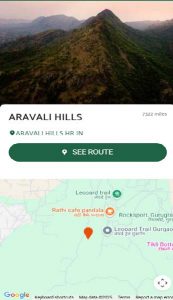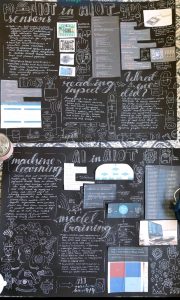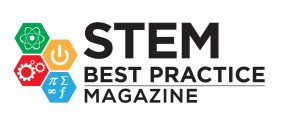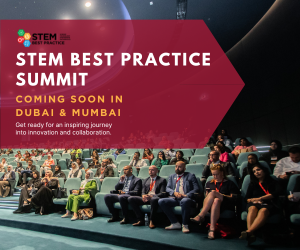1. Abstract
 Outdoor adventuring and hiking can be unpredictable, especially with the growing impact of climate change on weather patterns. The AIoT Environmental Tracker is a low-cost, portable device created to assist hikers in monitoring real-time temperature and humidity conditions. This system is built using an ESP32 microcontroller, a DHT11 sensor, and the ThingSpeak platform for cloud-based data visualization. The project combines principles of electronics, environmental science, and coding with real-world problem solving, resulting in a reliable, reusable, and educational tool for those navigating natural terrain. Through sensor calibration, WiFi-enabled data transmission, and dynamic cloud processing, this device promotes safety and awareness in the outdoors, while showcasing how AIoT can be applied to environmental monitoring.
Outdoor adventuring and hiking can be unpredictable, especially with the growing impact of climate change on weather patterns. The AIoT Environmental Tracker is a low-cost, portable device created to assist hikers in monitoring real-time temperature and humidity conditions. This system is built using an ESP32 microcontroller, a DHT11 sensor, and the ThingSpeak platform for cloud-based data visualization. The project combines principles of electronics, environmental science, and coding with real-world problem solving, resulting in a reliable, reusable, and educational tool for those navigating natural terrain. Through sensor calibration, WiFi-enabled data transmission, and dynamic cloud processing, this device promotes safety and awareness in the outdoors, while showcasing how AIoT can be applied to environmental monitoring.
2. Introduction
 In recent years, the unpredictability of weather conditions due to climate change has created challenges for those who engage in outdoor activities like hiking. Sudden changes in temperature, humidity, or environmental conditions can pose serious risks, especially in remote regions with limited communication infrastructure.
In recent years, the unpredictability of weather conditions due to climate change has created challenges for those who engage in outdoor activities like hiking. Sudden changes in temperature, humidity, or environmental conditions can pose serious risks, especially in remote regions with limited communication infrastructure.
This project originated from a simple question: How can hikers be better informed of changing environmental conditions in real time, even in the absence of traditional weather forecasts? The aim was to develop a compact, affordable, and wireless system that could track atmospheric conditions and transmit data live for both individual and group safety.
By combining Internet of Things (IoT) capabilities with environmental sensing, this project integrates AIoT—Artificial Intelligence of Things—as a modern solution for outdoor safety and awareness. The system also serves an educational purpose, showcasing how coding, electronics, and cloud services can come together in a real-world STEM application.
3. Research & Background
The core of this project lies at the intersection of IoT (Internet of Things) and environmental science. According to the World Meteorological Organization, outdoor recreation areas are increasingly vulnerable to extreme weather changes. In many cases, small shifts in temperature and humidity can serve as early indicators of larger weather systems, such as storms or fog.
Research into existing weather tracking tools revealed a gap: while professional systems are accurate, they are often expensive, bulky, or inaccessible to average hikers. Mobile weather apps depend on regional forecasts and may not reflect microclimates encountered on actual hiking trails.
To bridge this gap, I explored using the ESP32, a cost-effective microcontroller with built-in WiFi and Bluetooth capabilities, often used in IoT projects. Paired with a DHT11 sensor—which reads temperature and humidity—and connected to ThingSpeak, a cloud-based platform for real-time IoT data analysis, this combination allowed for a highly functional prototype that could be recreated by students and hobbyists alike.
4. Methodology
 The development of the AIoT Environmental Tracker involved several stages: hardware setup, code development, WiFi configuration, cloud integration, and data visualization.
The development of the AIoT Environmental Tracker involved several stages: hardware setup, code development, WiFi configuration, cloud integration, and data visualization.
Hardware Components Used:
● ESP32 microcontroller (NodeMCU variant)
● DHT11 sensor module (for temperature and humidity)
● Breadboard and jumper wires
● Micro USB cable
● Internet-connected computer
● ThingSpeak account (MATLAB integration for IoT analytics)
● Serial monitor for testing
● Portable power bank (for field testing)
Step-by-Step Process:
1. Sensor Initialization and Testing Using the Arduino IDE, I loaded a test script to read raw data from the DHT11 sensor and print it to the serial monitor. This ensured the sensor was working and delivering stable temperature and humidity values.
2. ESP32-WiFi Configuration The ESP32 was configured to connect to a local WiFi network, using standard ESP32 WiFi libraries. This enabled the microcontroller to send HTTP requests to ThingSpeak.
3. Data Transmission to ThingSpeak I created a dedicated ThingSpeak channel with two fields: temperature and humidity. The ESP32 script was modified to format the sensor data and send it via POST requests every 30 seconds.
4. Graphical Visualization ThingSpeak’s built-in visualization tools were used to generate real-time graphs of temperature and humidity trends. These are accessible via a unique URL, allowing hikers or remote observers to monitor data on any internet-connected device.
5. Project Results
Deliverables:
● A fully functional prototype capable of reading and transmitting environmental data.
● Integration with ThingSpeak for real-time remote monitoring.
● Reusable code libraries for ESP32–DHT11–ThingSpeak communication.
● Custom visual dashboard for user-friendly data analysis.
Visuals:
Graphs and charts generated by ThingSpeak during testing clearly displayed fluctuations in temperature and humidity, especially during the early morning and late evening hours. These trends could be used to predict upcoming fog, dew, or rainfall—important considerations for hikers planning overnight camps or high-altitude climbs.

Analysis:
The device responded reliably to environmental changes and transmitted accurate readings at set intervals. During testing, humidity levels rose significantly before a local rain event, validating the system’s practical utility. The graphs were easy to interpret, and the mobile-accessible ThingSpeak dashboard made it ideal for field use.
6. Conclusion
The AIoT Environmental Tracker demonstrates how low-cost hardware and open-source platforms can be used to build practical solutions for real-world problems. It empowers hikers and nature enthusiasts to better understand and respond to environmental changes in real time, increasing safety and awareness.
This project not only strengthened my skills in coding, electronics, and cloud computing, but also showed me how powerful technology can be when applied to human-centric challenges. It reinforced the importance of accessibility in STEM design—ensuring tools are usable not just by experts, but by anyone who might benefit.
7. Future Improvements
While the prototype was effective, there are several ways to enhance the system:
● Offline Functionality: Add an SD card module to log data when no WiFi is available.
● AI Integration: Use machine learning to predict weather shifts based on pattern recognition.
● Additional Sensors: Include air pressure, altitude, or gas sensors for more detailed environmental insights.
● Mobile App Sync: Create a mobile app that connects to the ThingSpeak dashboard for even easier access.
8. Final Reflection
This project helped me understand how STEM isn’t confined to labs or textbooks—it’s a tool for making the world safer, smarter, and more sustainable. Through this device, I was able to turn my coding and electronics knowledge into something tangible, useful, and impactful. I hope this inspires other young STEM enthusiasts to take on problems they care about, and use technology not just to innovate, but to improve lives.
About the authors:
Aadya Lal: I am a passionate IGCSE student and aspiring IB scholar with strong interests in STEM, music, and athletics. A national-level swimmer and Trinity Grade 4 pianist, I am also among the top 50 students selected for a Harvard program. My recent projects include AIoT environmental tech and exoplanet life detection using AI and spectroscopy.
Aryaman Pillaii: I am a curious and innovative student with a strong passion for STEM and football. I have worked on impactful projects like artificial muscles and environmental sensing technology, combining technical skills with creativity. Alongside my academic pursuits, I am also an avid footballer who values teamwork both on and off the field.



